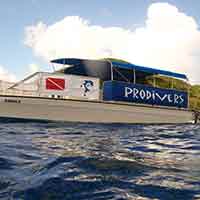St Kitts Scuba Diving
Welcome to the amazing world of St Kitts underwater
Diving in St Kitts
St Kitts Scuba Diving is very much like the rest of the Island, relaxed, unspoiled and very enjoyable.
On St Kitts reefs the soft corals in particular are in excellent condition and we enjoy a large population of Sea Turtles, Southern Stingray, Moray Eels, Caribbean Lobster and many varieties of fish.
You will also find a number of wrecks to explore while Scuba Diving.
St Kitts weather for Scuba Diving
Here in St Kitts the weather is very reliable, we have sunshine almost everyday.
The wind usually comes from the east which means that the more sheltered west side of the island is ideal for diving.
January to March are the months when the trade winds blow so surface chop is common at that time of year.
Sea temperatures in St Kitts
January to March 78° F
April to May 79° F
June to July 81° F
August to October 84°F
November to December 83° F to 82° F
Visibility and Current in St Kitts
Visibility is excellent, usually in the 60 ft plus range.
Obviously visibility differs from day to day (and site to site) due to many factors, but it is rare that our visibility can be described as “bad”.
There is no drift diving here!
Strong currents are very unusual for us on the west side of the island.
Dive site depths in St Kitts
Because we are a volcanic island the majority of our reefs are multi level, giving us a choice of depths.
Details of the depths of each site are listed on our dive sites of St Kitts page.
The best marine life here is in the 40 – 70 ft range.
Our wreck sites range from 40 ft to 60 ft
St Kitts Reef quality
Like elsewhere in the world our Hard Corals suffer from the usual stress factors but our Soft Corals and Sponges are in excellent condition.
How does St Kitts diving compare to other islands in the Caribbean?
Background on St Kitts reefs
Millennia ago islands in the Caribbean were formed in 2 ways. Coral Islands are reefs that became land when the sea levels dropped. Volcanic Islands were literally pushed up from the ocean by volcanic activity.
On Coral Islands the reefs are just a continuation of the land so lots of close in shallow reefs.
Volcanic Islands have fringing reefs which tend to be much further from the shore.
Examples of Coral Islands are Grand Cayman, Turks and Caicos and the Bahamas.
The coral islands have the white sand beaches, the volcanic islands have darker sand.
St Kitts is a Volcanic Island as are St Lucia, St Martin and Grenada so while you can find reefs close to shore, these are normally fringing reefs built on volcanic rock.
This means that many of the reefs are multi level and you can find interesting underwater rock formations covered in coral
So what is St Kitts diving really like?
Personally, I would rate St Kitts a 5 or a 6 out of ten for the well traveled diver.
Less experienced divers will find diving here excellent.
Back in 2007 when I first came to the Island I was surprised to find so few larger fish here but over the years that situation has improved dramatically.
All the videos and photos in my guide to Caribbean Marine Life were shot right here in St Kitts.
Scuba diving in St Kitts will not disappoint, it is more likely to surprise you with the quantity and variety of marine life here.
Why do we not hear more about scuba diving in St Kitts?
St Kitts, in comparison to most Caribbean islands was relatively late entering the tourism market.
When we first visited on a cruise in the mid 1990’s Port Zante (now one of the largest ports in the Caribbean) was a big patch of bare land with a few wooden stalls selling trinkets.
The first big hotel here was the Marriott in 2003.
With the close of the sugar industry 10 years ago the government became serious about the promotion of the tourist industry in St Kitts.
The island has a world heritage site (Brimstone Hill), a still growing rain forest, a volcano, some excellent beaches and the only working railroad in the Caribbean (the sugar train).
All these assets are a good solid tourism product which have consequently been heavily promoted.
The government here rarely promotes scuba diving so consequently we are not noticed on the world stage.
In some ways the lack of promotion is a benefit as it has reduced the pressure and stresses on our coral reefs.
If you are interested in the history of St Kitts and what is available landslide on the island then you should visit the St Kitts Visitor guide.






